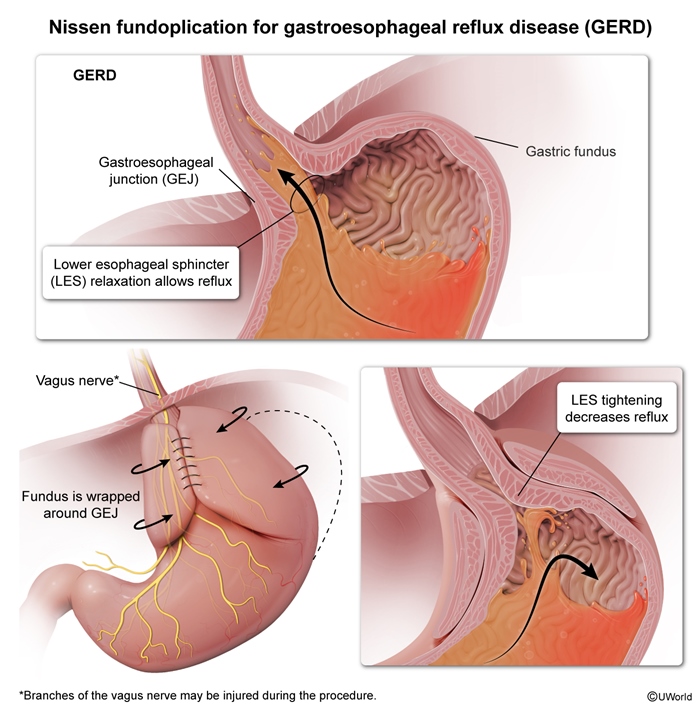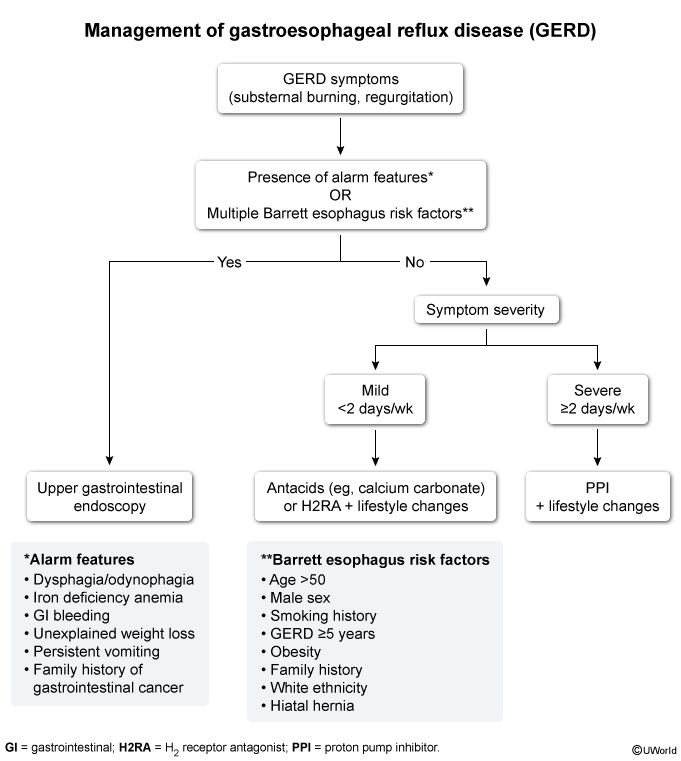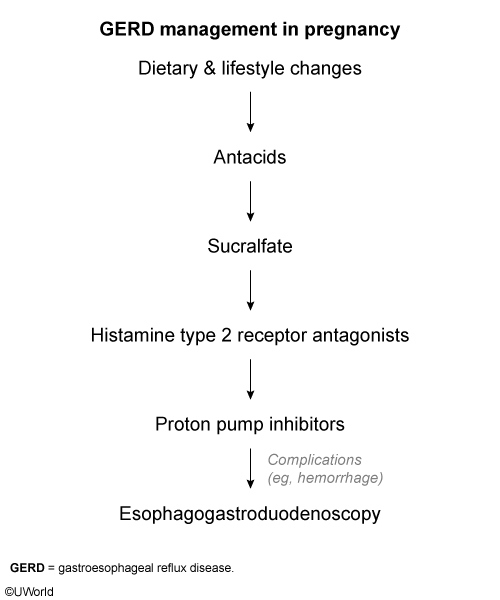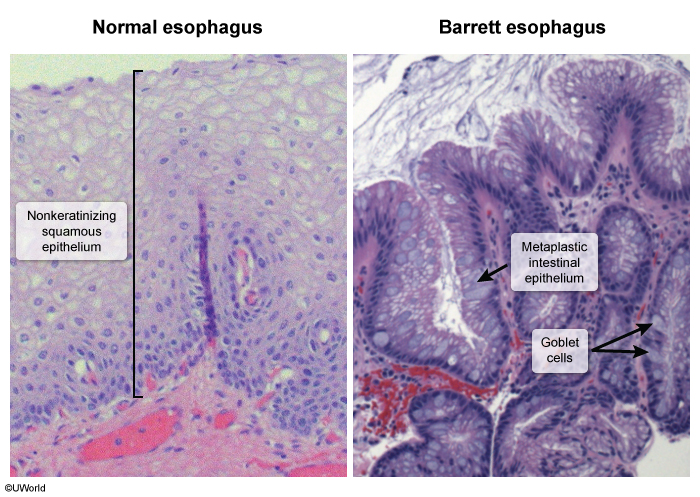Gastroesophageal Reflux Disease (GERD)
Article Sections
Introduction
Gastroesophageal reflux disease (GERD) is a common gastrointestinal disorder characterized by the retrograde flow of gastric contents into the esophagus, resulting in mucosal injury.
Pathophysiology
GERD is caused by incompetence of the lower esophageal sphincter (LES) due to decreased tone (or excessive transient relaxations) of the sphincter muscle, anatomic disruption of LES structure (eg, hiatal hernia), or excessive intra-abdominal pressure. This allows regurgitation of acidic gastric contents into the esophagus, leading to inflammation, erosion, and ulceration. Conditions that decrease esophageal peristalsis further increase exposure of the esophageal mucosa to regurgitated acid.
Risk factors
Major risk factors for GERD include the following:
- Decreased LES tone: smoking, excessive alcohol intake, certain medications (eg, nitrates, calcium channel blockers)
- Abnormal LES structure: hiatal hernia
- Increased intra-abdominal pressure
Continue Learning with UWorld
Get the full Gastroesophageal Reflux Disease (GERD) article plus rich visuals, real-world cases, and in-depth insights from medical experts, all available through the UWorld Medical Library.
Figures



Images
